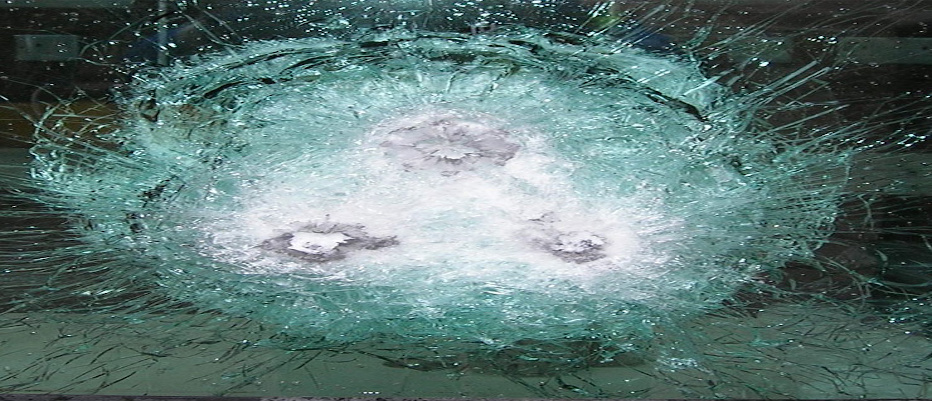Resistance to ballistic attack
It is possible to manufacture window systems that are resistant to a range of ballistic threats. Each manufacturer will have their own design, but mainly they are based on multiple layers of glass that are laminated together. Some systems use polycarbonate or other types of material to work in conjunction with the glass to improve performance.
When procuring bullet resistant glass, it is very important to specify against a known standard and you should ensure that the manufacturer can provide you a test certificate demonstrating their compliance to the specified standard. Often, suppliers may buy in the glass and the window frames from different manufacturers, so you should ask to see certification for the three separate elements: the glass, the frame and the complete system.
Further information can be found in the guidance notes at the bottom of this page:
- 'Bullet resistant glass'
- 'Bullet resistant windows, doors, blinds and shutters'
- 'Protection against bullets'

Additional advice should be sought from a blast engineer from the Register of Security Engineer and Specialist (RSES) if a higher level of risk from improvised explosive devices has been identified in relation to the building you are concerned with. A more detailed blast protection strategy will be needed to bring down the higher levels of risk.
Resistance to forced entry
Windows are inherently vulnerable to forced entry and will therefore need to be supplemented with an additional barrier - commonly referred to as window protection systems.
Window protection systems are designed for external or internal use on buildings. They provide protection against a range of forcible attacks and a number of products have been tested and approved to NPSA levels using NPSA manual attack standards. Protection systems are divided into the following categories:
- bar sets
- internal security blinds
- internal security grilles
- external window void protection
Proprietary products should be specified to an appropriate performance standard for security, proportionate with the anticipated threat.
It is important to also consider the use of intruder detection systems, which can detect either an attempted or actual breach of a window.
Further advice
If you are a client of NPSA and require assistance, please contact your NPSA Adviser for advice. If you are not a client of NPSA please engage a reputable security specialist or your local police force Designing Out Crime Officer to help you.
Further information is available via the related pages below.